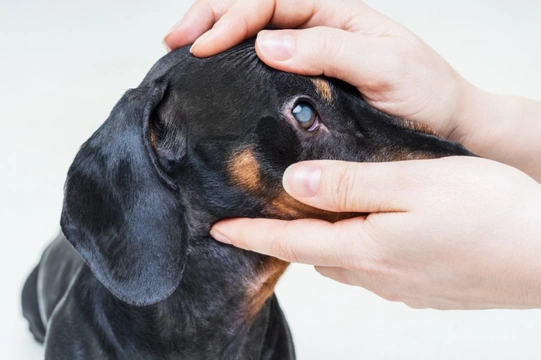
What are the most common dog eye problems, and can you prevent them?
Dogs have very soulful eyes that are adept at both conning us out of treats more than we might like and showing us huge amounts of affection, and as is the case for humans too, the condition and functionality of your dog’s eyes will tend to weaken as they get older and begin the slow, gradual decline towards the end of their lives.
There are also a number of canine eye conditions that can develop in dogs at any age, as well as those that are hereditary, and altogether there are a broad and diverse range of different eye conditions that can affect the dog.
Some of these are naturally more serious than others, and some can be cured or reversed; and whatever the issue, prompt intervention and diagnosis can give your dog the best prognosis for preserving their vision and/or avoiding pain, or let you get ahead of managing their condition.
Health is of course something of a lottery, and you can’t predict with any certainty if your dog will or won’t develop an eye problem at some point; but it can be helpful to know the most common and prevalent eye conditions in dogs, whether they’re infectious or hereditary or develop for no apparent reason, and what can be done about them.
The Royal Veterinary College set out to find out the most common eye conditions in dogs by undertaking a large-scale survey of UK veterinary clinics between 2009 and 2013 and collating their results; and with this in mind, this article will tell you the five most common dog eye problems, and a little more about them. Read on to learn more.
Number 1: Conjunctivitis
By far the most common and prevalent canine eye condition is conjunctivitis, and this is also one of the more minor ones, although it can be uncomfortable and distressing for your dog.
Conjunctivitis is likely to affect around one in twenty dogs at some point in their lifetime, and is highly contagious and very easily passed from one dog to another.
You will need to take your dog to the vet to get a formal diagnosis of conjunctivitis and to enable them to establish the best course of treatment, but conjunctivitis in dogs can usually be resolved with topical eye creams or drops provided with a veterinary prescription.
Number 2: Cataracts
Cataracts in dogs are the second most common canine eye condition, and one that most of us are familiar with. Cataracts can actually come in a number of different forms and types, but their signature is the clouding of the lens of the eye, and this is something that is common in dogs as they get older.
Cataracts in dogs are not contagious, and they can sometimes be corrected with an operation. They don’t cause pain to your dog, but do occlude their vision. Not all cataracts in dogs can be treated as there is an increased risk of anaesthetic for surgery with elderly dogs, and cataracts in dogs are most common in old age.
Number 3: Dry eye or keratoconjunctivitis sicca
Keratoconjunctivitis sicca is somewhat better known by the easier-to-pronounce name of “dry eye,” and this is the third most prevalent eye problem found in dogs.
Dry eye develops because the dog’s tear ducts don’t produce enough lubrication, which has a number of impacts on your dog’s comfort and the overall health of their eyes, which makes it rather complex.
Dry eye sometimes has a hereditary factor to it, and is more common in some dog breeds than others as a result. However, it is not contagious.
Dogs with dry eye require lifelong medication and management for their condition, as it cannot be reversed or cured.
Number 4: Mass lesions of the eyelid
Mass lesions of the eyelid are the fourth most common eye problem found in dogs, and this is something of a catch-all title that encompasses and describes any number of different types of masses and growths that can develop on the dog’s eyelid.
Some of these may be malignant or cancerous but many will not be ,but finding a lump or strange growth on your dog’s eyelid is something you should get the vet to check out promptly so that you can find out quickly what you’re dealing with, and the best course of action for it.
Number 5: Tear duct abnormalities
Abnormalities of the tear ducts are the fifth most common eye problem in dogs, and once more this is something of a catch-all title. Tear ducts that are malformed, incorrectly positioned or otherwise poorly or abnormally developed may under or overproduce lubrication for the eyes, and are sometimes the cause of cosmetic issues like tear staining of the fur under the eyes.
Once more, there is a hereditary element to this, and tear duct abnormalities are not contagious, but are more prevalent in some breeds and types of dogs than others.



